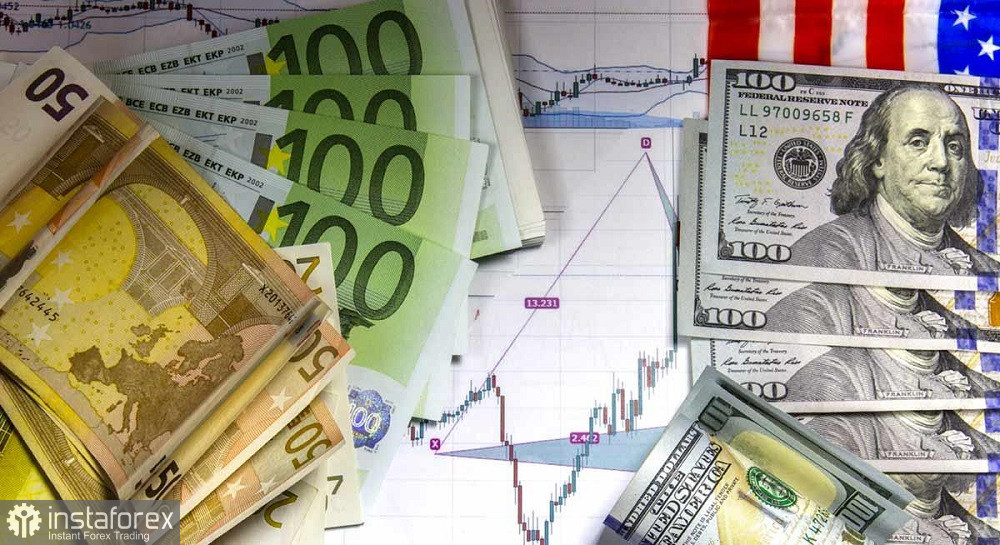The EUR/USD pair remains under pressure despite the ongoing U.S. government shutdown. On Monday, the pair dropped impulsively to the mid-1.16 range but failed to break through the key support level at 1.1650, which corresponds to the lower band of the Bollinger Bands indicator on the daily chart. The trading day ended at 1.1711, and on Tuesday, sellers tried to hold the pair within the 1.16 zone, driven by broad U.S. dollar strength and waning euro demand.
With little to focus on in the economic calendar, traders have turned their attention to political and geopolitical news — particularly developments in France and the U.S. shutdown.

The unexpected resignation of France's Prime Minister Sebastien Lecornu, who held office for just 27 days (the shortest tenure in modern French history), sent shockwaves through European markets. The euro came under pressure due to concerns that the prolonged political crisis could lead to early parliamentary elections—a scenario in which far-right parties are expected to gain influence, potentially leading to instability across Europe.
Given that the euro has reacted sharply to the turmoil, it's important to consider the possible political scenarios:
- Scenario 1: The appointment of a new Prime Minister, possibly from the left. This would force President Emmanuel Macron to abandon several policy initiatives while avoiding further gains by the far right. This is the most benign and euro-positive outcome.
- Scenario 2: Snap parliamentary elections. The core problem for Macron is the currently fragmented and divided parliament. Since the last elections, no single party or coalition holds a stable majority, reducing Macron's presidency to a "lame duck" status despite his broad powers. Early elections might not solve this and could even strengthen far-right leader Marine Le Pen's National Rally, which polls suggest could increase their seats from 125 to as many as 230 — still short of a majority but a significant leap in influence.
- Scenario 3 (less likely): Macron's resignation. Right-wing and some left-wing forces have been calling for a complete overhaul of the government through new presidential and parliamentary elections. Constitutionally, Macron is not eligible to run again in 2027, and he has so far expressed no intention of resigning before completing his term.
According to recent reports from Paris, Macron appears to be pushing for Scenario 1. Reports suggest he asked Lecornu to conduct consultations through Wednesday to form a new government. French media speculate that Olivier Faure, leader of the Socialist Party, or one of his allies, may be nominated for Prime Minister, provided that Macron loyalists are given positions in the new cabinet.
Should this materialize, the political crisis in France may fade into the background — at least for now. While the crisis won't be resolved, it may stop scaring investors with immediate radical outcomes (though those may still unfold later, when yet another PM potentially resigns).
The ongoing shutdown remains a fundamentally bearish factor for the U.S. dollar. Still, somewhat paradoxically, the U.S. Dollar Index has risen for two consecutive days. One could say dollar bulls are grasping at straws, reacting positively to any glimmer of bipartisan negotiation.
For example, President Donald Trump recently mentioned that discussions on extending Obamacare health insurance subsidies are "ongoing," and that the Democrats' demands are "being discussed."
While this statement was vague and non-committal, the market still responded with renewed dollar strength: the U.S. Dollar Index returned to the 98.00 level, and major USD pairs adjusted accordingly.
Despite the current bearish sentiment surrounding EUR/USD, short positions remain a risky strategy. The fundamental foundations supporting a bearish case are themselves unstable.
For instance, if Macron appoints a new Prime Minister and Trump escalates the shutdown by firing unpaid government employees, the dollar could come under renewed pressure.
Also worth noting: despite intraday bearish momentum, EUR/USD was unable to break below key support at 1.1650 — the lower Bollinger Band on the daily chart. This is a significant technical signal suggesting that short positions could be unreliable at current levels.
Therefore, it makes sense to stay out of the market for now. Selling EUR/USD only becomes relevant if the pair breaks and consolidates below 1.1650. Long positions are also not justified, given the ongoing political uncertainty — both regarding the U.S. shutdown and developments in France.
 English
English 
 Русский
Русский Bahasa Indonesia
Bahasa Indonesia Bahasa Malay
Bahasa Malay ไทย
ไทย Español
Español Deutsch
Deutsch Български
Български Français
Français Tiếng Việt
Tiếng Việt 中文
中文 বাংলা
বাংলা हिन्दी
हिन्दी Čeština
Čeština Українська
Українська Română
Română

